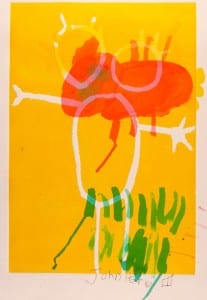As a visual artist I’ve created images in Silkscreen, Intaglio, Lithography, Mixed Media, Watercolor, Acrylics and Oils and in a variety of methods, primarily Direct Painting (Alla Prima) and genre, but I always felt drawn to the visual degree of depth and luminosity present within the magnificent oil painting created by Master Artisans of the Renaissance to the Romantic Periods. The knowledge in creating paintings with similar attributes always eluded me. Little did I know that in order to achieve this luminous depth I had to learn an entirely new method in oil painting and with pigments with which I’d never been familiar with. Regardless of my persistent inquiries, the answers I sought would not be forthcoming for decades and when I learned in 1999 that the key word in opening this ancient volume of knowledge would lie with the word, Indirect Oil Painting.
My first introduction to creating art began at the age of nine and with an emphasis on drawing from life, as well as copying from books featuring paintings in major museums. My instructor, the late Jack Simmerling, a Chicago watercolorist, who gained acclaim for his renderings of historical Chicago landmark architecture, stressed the importance in developing one’s drawing skills. “If you can meet the challenges in perspective, value, composition and spatial relationships, then your paintings will be successful.” His words have lived with me for all 50 plus years I’ve been painting.
In so much that I have enjoyed and successfully rendered paintings created in the painterly Direct, Alla Prima Painting Methods, I have felt this method never fully met what I have been hoping to achieve in my paintings. And unfortunately, Virgil Elliott’s book, Traditional Oil Painting, wasn’t released until 2007, so with my PC I independently researched and was introduced to Eastern and Western European Flemish oil painting artists, who generously shared their knowledge and expertise, along with links to museum conservationists, who further enlightened me to the beneficial and not so beneficial pigments and mediums available. Putting this knowledge into hands-on practice led me through some humorous and not so humorous trial and errors, one of which I will share in the course of this blog. Unbeknownst to me at the onset was that not all oil painting from Renaissance to the 19th Century was created in the Flemish Methods, but that there was a second school within Indirect Painting known as the Venetian School and their methods differed in several ways from that of Flemish artists. The Venetian Method, believed to have been initiated by Giorgione, Titian and other Venetian oil painters, introduced creating their drawings on a mid-tone ground and then followed with an opaque gray layer, known as a Grisaille, creating a gray pallet with Lead-Based White paint, also known as Stack White. When I learned about the artist’s use of Lead White in their pallet, I knew instinctively that Lead White was a key component in their achieving the luminosity within their paintings.
Without a demonstration of the Venetian Methods, initiated with the grisaille, tints and scumbles, I had ventured into uncharted territory and therein I learned by my hits and misses. One such early “miss”, which I share with all my student’s is the humorous and decidedly nonsensical approach in removing the first several excessively oily glazed layers. The pigmented glazes were collecting in patches and not forming a thin layer over the composition. My frustration peaked when I couldn’t remove the under-layers of previously dried oily pigments with a solvent. My solution, purchase Formby’s Finisher Remover. After applying a thin layer of Formby’s, to my relief it removed the upper layers of glazes, but it didn’t stop there, it continued to eat away the grisaille, the under drawing and culminated in eating a hole right through my Belgian linen! I learned the Fat Over Lean premise is one fell swoop!
Since those early self-taught days in painting in Venetian methods, I am by no means 100% spot on, but I am continuing to learn with each still-life or figurative painting I create. This process is not for those who wish to witness immediate results, as a painting can take months to complete. At any one time, I have a dozen or more paintings in various states of completion, thus allowing the natural course of glazes setting-up. Of equal importance is learning which pigments are opaque, semi opaque and scumble worthy and which are considered lean and those that are fat. What and when is critical in the application of pigments.
This educational journey has been so rewarding and while I always loved oil painting, nothing has brought me more satisfaction and joy than painting in the Venetian Methods, especially when it comes time when I can begin the color layer. I call it, “Turning on the Lights” thus witnessing the luminous glow reveal itself in the painting’s final stages.





